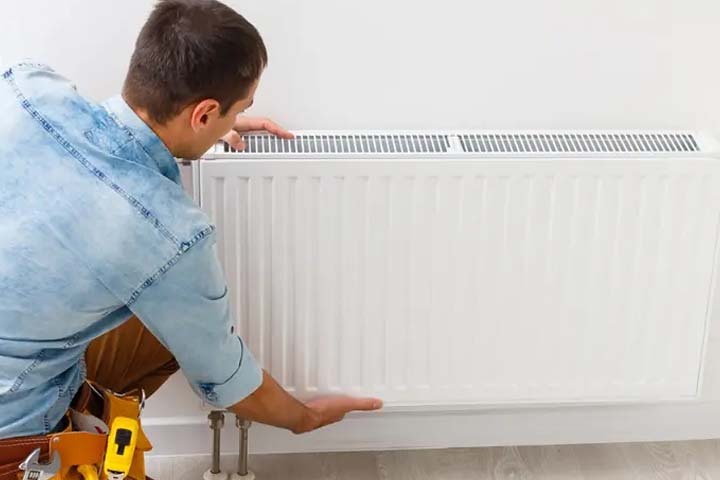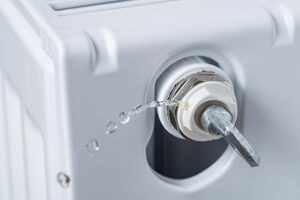Table of Contents
For those who don’t know, the ECO4 is an energy improvement scheme monitored by government bodies. This is funded by large energy suppliers. ECO scheme offers many grants, like central heating systems, boilers, heat pumps, and insulation.
The first time central heating grant provides all energy efficiency measures. Those measures include heating systems, thermostats, radiators, and insulation. This helps improve your property’s energy performance.
This blog will share the measures covered under the ECO4 scheme, and specifically the central heating grant.
What Does the First Time Central Heating Grant Cover?
A first-time central heating system covers the entire system costs. The costs include installation, radiators, pipework, and a smart control system.
As this scheme runs on the fabric-first principle. It might include loft insulation, cavity wall insulation, or solid wall insulation, as needed.
Note: The Fabric first principle refers to improving the energy efficiency instead of generating more heat. The building’s thermal fabric includes floor, roof, walls, and windows.
Below are the details of central heating components included in the scheme.
1. An A-Rated Boiler or Heat Pump
If your home has a gas meter installed before April 2022, you’ll get an A-rated condensing combi boiler for your property. In case your home doesn’t have a gas connection, your grant will include an air source heat pump as a central heating system.
The boiler or heat pump installed is usually highly energy efficient, modern, and provides green energy. Gas boilers are usually condensing type, as they use up to 98% of energy for heating and waste very little. In comparison, conventional systems are only 60% to 80% energy efficient.
An A-rated heating system:
- Saves more on energy costs to meet your annual bill savings goals.
- Uses most of the energy you paid for heating and wastes really little or none.
- Manages a more comfortable temperature throughout the house.
2. Radiators With Thermostatic Radiator Valves (TRVs)
The ECO4 grants also provide modern radiators for each room and living area as per your needs. This helps you manage the temperature of each room and turn on the heating for only the rooms in use. This gives you better control and energy savings.
TRVs are also included under the Energy Company Obligation Scheme. The TRVs are responsible for managing the temperature of each radiator. The automatically detects the room temperature and adjusts the hot water flow for optimal temperature.
3. Smart Thermostats for Temperature Control
A central heating system installed under the ECO4 measures gives you full control with smart controls. These smart systems can:
- Automatically set the temperature settings
- Learn user preferences over time
- Optimize the energy usage, including the off-peak terrif settings.
- Be controlled remotely from your mobile device and wifi connection.
Moreover, these systems also offer Geofencing features (depending on the model/brand). Geofencing allows the system to use GPS to detect your arrival home and automatically adjust the heating.
4. Pipework and Necessary Fittings for a Complete System
ECO measures cover the fittings and pipework for installation. That means there is nothing you need to spend your money on throughout the installation.
Plus, if there are any damages to the property during the installation, you will also get the repairs. However, redecoration is not part of the deal under any circumstances.
So yes, the radiators are covered under the first-time central heating grants, along with every expense possible.
Air Source Heat Pump Grants
Eligibility Criteria for Grants Under ECO Scheme
To qualify for the renewable energy or gas central heating systems, you need to meet the following criteria.
- The property that never had a central heating system before is qualified for a central heating system.
- Your property’s EPC rating should be below D.
- You must be a qualifying benefit recipient.
If you are not on government benefits, you might still qualify under ECO flex rules. ECO flex rules allow local councils to provide grants to low-income homes with a household income lower than £31,000. But for that, you need to contact your local council first.
Application Process for Installing the ECO4 Grant
The process for applying is very simple for homeowners and tenants, as Grant Boilers (or any other installer) will apply on their behalf. Grant Boilers’ ECO4 experts will also handle all the paperwork for you.
Here is how a typical application process looks:
- Find a TrustMark & Gas Safe registered Installer (I listened to your heart saying ‘Grant Boilers’).
- Check eligibility using the online calculator (available at the top of this page).
- If you qualify, book a callback and schedule a property survey.
- Wait for the approval and installation.
Once measures under ECO4 are approved, registered installers will install your system.
Final Thoughts
To conclude the guide, central heating grants not only cover the radiators. They also provide smart thermostats, TRVs, pipework, and installation costs. This makes these grants more suitable for households looking for a free and efficient heating system.
In this guide, we have discussed components covered under the ECO4 fund for installing a central heating system. If this is something you are looking to get hold of, don’t wait any longer.
Frequently Asked Questions
No, the radiators are a component of the central heating system. This system includes a boiler/heat pump, thermostats, pipework, radiators, and TRVs. Radiators alone can not be referred to as a central heating system.
Absolutely, if your home has older boilers, it’s definitely worth replacing them with modern ones. This will not only upgrade your home’s aesthetics but also allow you to control your heating system.
Type 21 radiators are known as P+ radiators with one set of fins and two panels. On the other hand, type 22 radiators are known as K2 radiators, which have 2 sets of fins and 2 panels. K2 radiators have increased surface area and high energy output as compared to P+ radiators.
Yes, the radiators are the core component of the central heating system. They are the main energy distributors throughout the property. There are usually separate radiators installed in each room for optimal control. They also have thermostatic radiator valves to control the temperature of each radiator.



